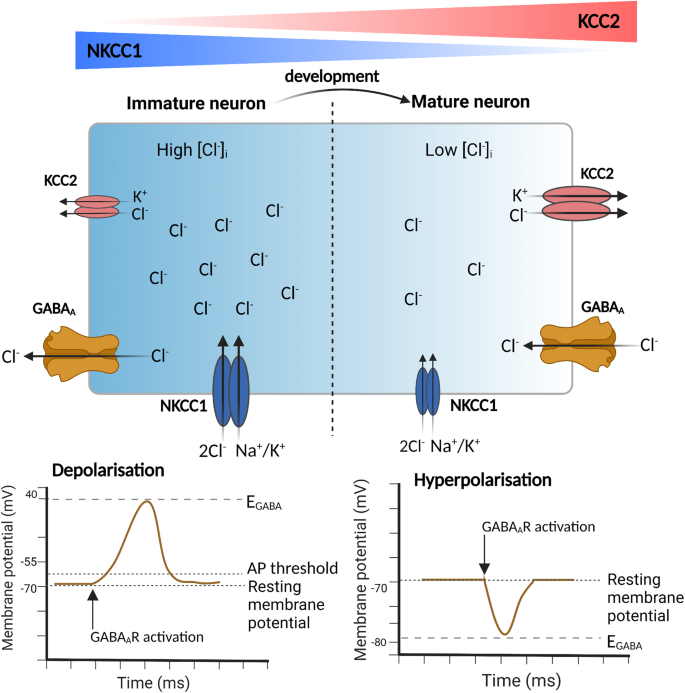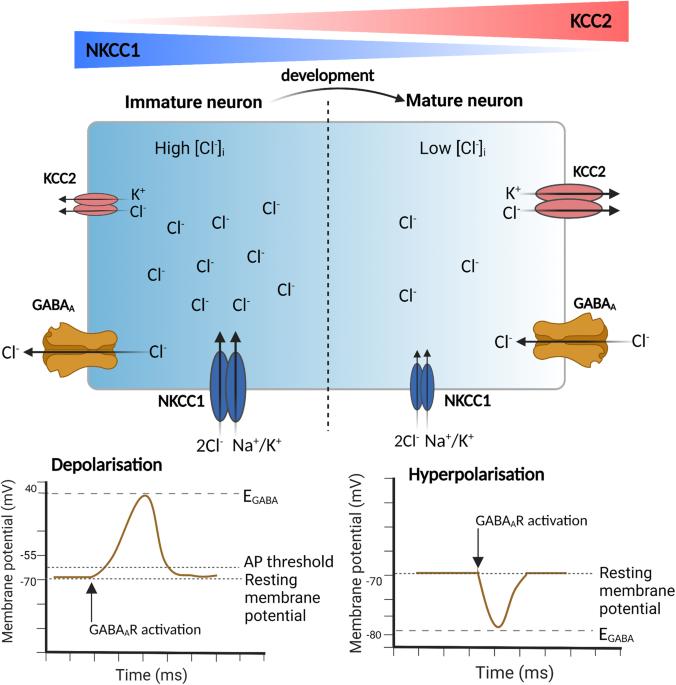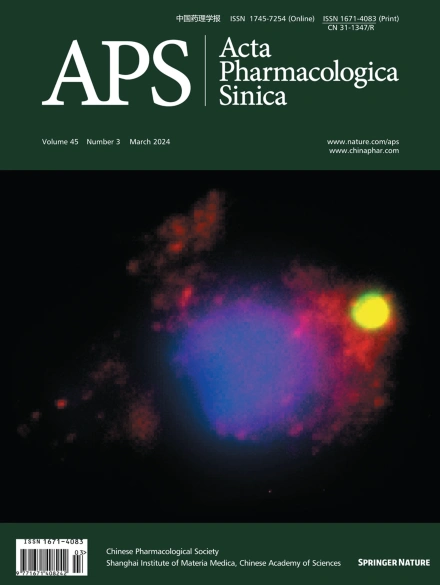神经元 K+-Cl- 共转运体 KCC2 是治疗癫痫的有望药物靶点。
IF 6.9
1区 医学
Q1 CHEMISTRY, MULTIDISCIPLINARY
引用次数: 0
摘要
癫痫是一种常见的神经系统疾病,以无诱因的癫痫发作为特征。γ-氨基丁酸(GABA)是大脑中主要的快速抑制性神经递质,GABA与GABAA受体(GABAAR)的结合调节Cl-和碳酸氢盐(HCO3-)通过通道孔的流入或流出,分别导致GABA能抑制或兴奋。神经元特异性 K+-Cl- 共转运体 2(KCC2)对于维持细胞内较低的 Cl- 浓度、确保 GABAAR 介导的抑制作用至关重要。KCC2 功能受损会导致与癫痫活动相关的 GABA 能兴奋。KCC2 的功能缺失突变和表达改变会导致[Cl-]i 升高和突触抑制受损,从而导致人类患者癫痫发病。KCC2 拮抗研究表明,由于 KCC2 功能降低会导致癫痫发作,因此有必要限制大脑内神经元的过度兴奋性。事实证明,以直接(增强 KCC2 激活)和间接 KCC2 调节(改变 KCC2 磷酸化和转录)为重点的策略可有效减轻癫痫发作的严重程度,并具有抗惊厥特性。这些发现突出表明,KCC2 是治疗癫痫的一个很有前景的治疗靶点。最近,人们在了解 KCC2 的调控机制,特别是通过 WNK、PKC、BDNF 及其受体 TrkB 等信号通路的调控机制方面取得了进展,从而发现了能调节 KCC2 的新型小分子药物。抑制 WNK 激酶或利用新发现的 KCC2 激动剂已在动物模型中证实了 KCC2 的激活和癫痫发作的抑制作用。本综述讨论了 KCC2 在癫痫中的作用,并通过探讨调节 KCC2 活性的各种策略来评估其作为癫痫治疗药物靶点的潜力。本文章由计算机程序翻译,如有差异,请以英文原文为准。


Neuronal K+-Cl- cotransporter KCC2 as a promising drug target for epilepsy treatment
Epilepsy is a prevalent neurological disorder characterized by unprovoked seizures. γ-Aminobutyric acid (GABA) serves as the primary fast inhibitory neurotransmitter in the brain, and GABA binding to the GABAA receptor (GABAAR) regulates Cl- and bicarbonate (HCO3-) influx or efflux through the channel pore, leading to GABAergic inhibition or excitation, respectively. The neuron-specific K+-Cl- cotransporter 2 (KCC2) is essential for maintaining a low intracellular Cl- concentration, ensuring GABAAR-mediated inhibition. Impaired KCC2 function results in GABAergic excitation associated with epileptic activity. Loss-of-function mutations and altered expression of KCC2 lead to elevated [Cl-]i and compromised synaptic inhibition, contributing to epilepsy pathogenesis in human patients. KCC2 antagonism studies demonstrate the necessity of limiting neuronal hyperexcitability within the brain, as reduced KCC2 functioning leads to seizure activity. Strategies focusing on direct (enhancing KCC2 activation) and indirect KCC2 modulation (altering KCC2 phosphorylation and transcription) have proven effective in attenuating seizure severity and exhibiting anti-convulsant properties. These findings highlight KCC2 as a promising therapeutic target for treating epilepsy. Recent advances in understanding KCC2 regulatory mechanisms, particularly via signaling pathways such as WNK, PKC, BDNF, and its receptor TrkB, have led to the discovery of novel small molecules that modulate KCC2. Inhibiting WNK kinase or utilizing newly discovered KCC2 agonists has demonstrated KCC2 activation and seizure attenuation in animal models. This review discusses the role of KCC2 in epilepsy and evaluates its potential as a drug target for epilepsy treatment by exploring various strategies to regulate KCC2 activity.
求助全文
通过发布文献求助,成功后即可免费获取论文全文。
去求助
来源期刊

Acta Pharmacologica Sinica
医学-化学综合
CiteScore
15.10
自引率
2.40%
发文量
4365
审稿时长
2 months
期刊介绍:
APS (Acta Pharmacologica Sinica) welcomes submissions from diverse areas of pharmacology and the life sciences. While we encourage contributions across a broad spectrum, topics of particular interest include, but are not limited to: anticancer pharmacology, cardiovascular and pulmonary pharmacology, clinical pharmacology, drug discovery, gastrointestinal and hepatic pharmacology, genitourinary, renal, and endocrine pharmacology, immunopharmacology and inflammation, molecular and cellular pharmacology, neuropharmacology, pharmaceutics, and pharmacokinetics. Join us in sharing your research and insights in pharmacology and the life sciences.
 求助内容:
求助内容: 应助结果提醒方式:
应助结果提醒方式:


